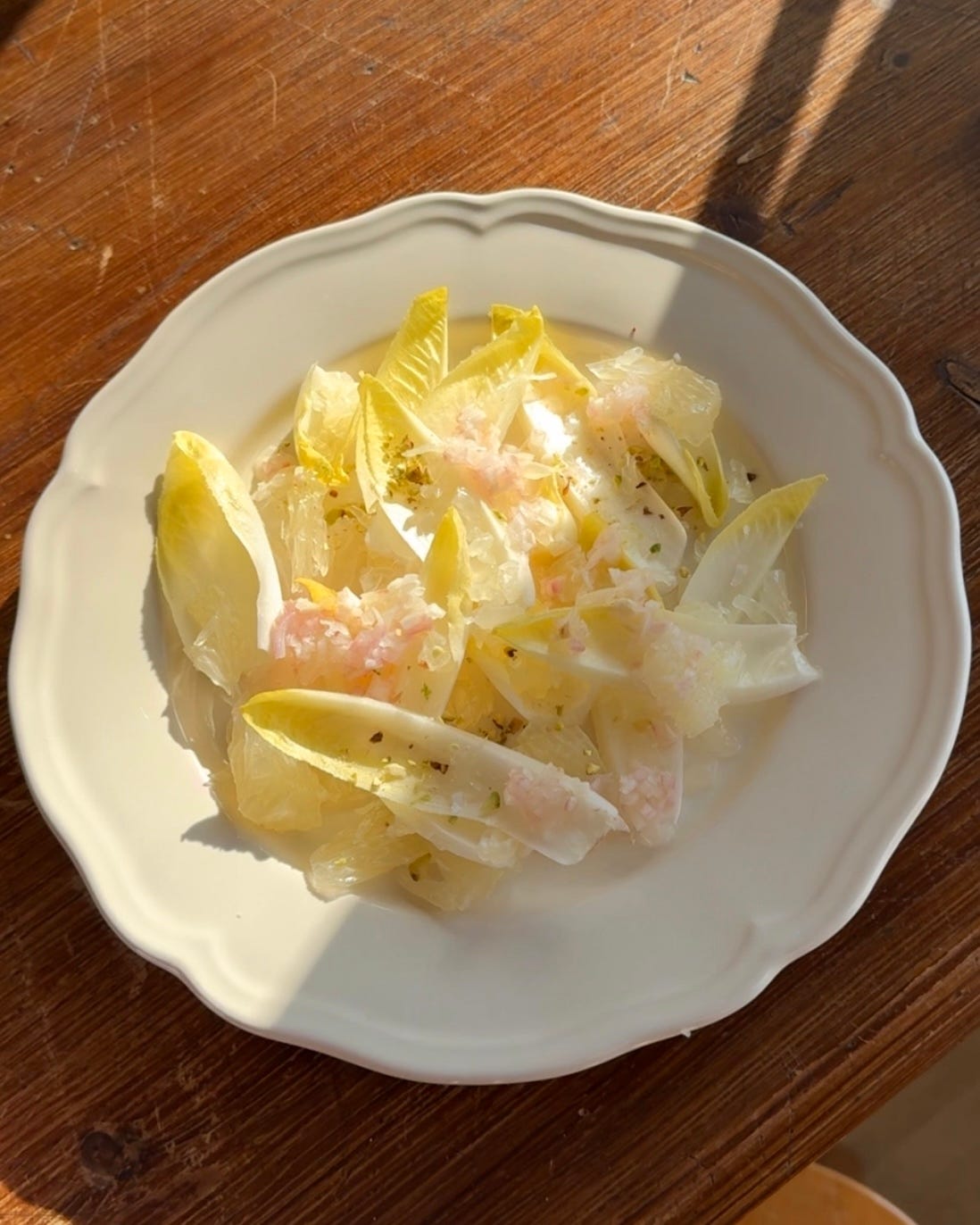Allô! 👋
Hello! Welcome to the seasonal sundays section of the good food at home newsletter. This is a weekly-ish paid supplement that aims to provide simple recipes for those seasonal ingredients that may sometimes elude or confound us in the kitchen. The main newsletter will always be free, but by subscribing to seasonal sundays you will not only be able to access extra recipes + the full archive, you will also help support all the researching, cooking, documenting & writing that goes into sharing this newsletter with you. If you’d like to be a part of a growing community and show you value this work, subscribing is easy and costs less than £2 per week (less than £1/week with an annual subscription or free if you refer some friends, and the first 7 days are always free)! Why not give it a shot? We’d love to have you 💛
Early March is a good time to make the most of winter citrus before the end of their annual prime and, thankfully, pomelos make no exception to this citric occasion. Pomelo season is however almost over, so I do hope you’ll forgive me, but I’ve only just found some near me and simply couldn’t resist showcasing the prodigious citrus before it really was too late.

If pomelos remind you of grapefruit, that’s because the good ol’ pomelo is basically the grapefruit’s mother and grandmother all at once. Still, while they are quite alike, pomelos tend to be much larger* and sweeter than grapefruit, as well as significantly pithier. A note of caution, however: pomelos, much like grapefruit, can adversely interact with the metabolism of certain medications and must sadly be avoided if contraindicated by your physician. Boo.
That being said, pomelos come in lots of different varieties, each with their own distinct shapes, sizes, colours and flavours, so don’t be too surprised if the ones you come across look a little different from mine. The yellow-skinned varieties I was able to get my hands on were a pale-yellow fleshed honey pomelo and pale pink-fleshed honey pomelo, but pomelo skins will vary from green to yellow to orange, and their flesh can range from a nearly colourless yellow to a deep sanguine hue of orangey-pink.
*actually, they are the largest citrus of all
While the pomelos we find in shops and markets are usually sold ready to eat, a good way to tell if the one you are hoping to imminently savour is actually ripe is to take a closer look — or, should I say, feel. Give the pomelo a gentle squeeze, and pay attention to its firmness; if there is a little bit of bounce and give, you’re good to go! If, however, the exterior feels a bit tight and/or hard, simply resist the urge to crack into it (it just won’t taste all that nice) and wait another day or two before trying again.
•••
If you are unsure as to how you might go about enjoying a pomelo, the answer is: like most other sweet citrus fruits! Pomelos aren’t quite as juicy as oranges or as easy to peel as clementines, but their special fragrance and tantalising flavour makes releasing their pulpy flesh from their bitter membranes very much worth the moderate effort. Simply segment with a knife to enjoy, taking care to remove any pith, seeds, and membranes as you go.
a light & crisp pomelo endive salad 🍊
Speaking of what’s nearing the end of its season, Belgian endive (AKA witloof chicory) is absolutely wonderful in citrus salads. Juicier and less bitter than other chicories (at least when eaten raw), their crisp leaves, once separated, are almost shaped like a vessel, so it’s easy to tear them off, fill them with something tasty, and scoop them straight up to your mouth, no fork in sight. That’s not what I did with this recipe but, you know… it’s good to know.
•••
INGREDIENTS
Keep reading with a 7-day free trial
Subscribe to good food at home to keep reading this post and get 7 days of free access to the full post archives.







